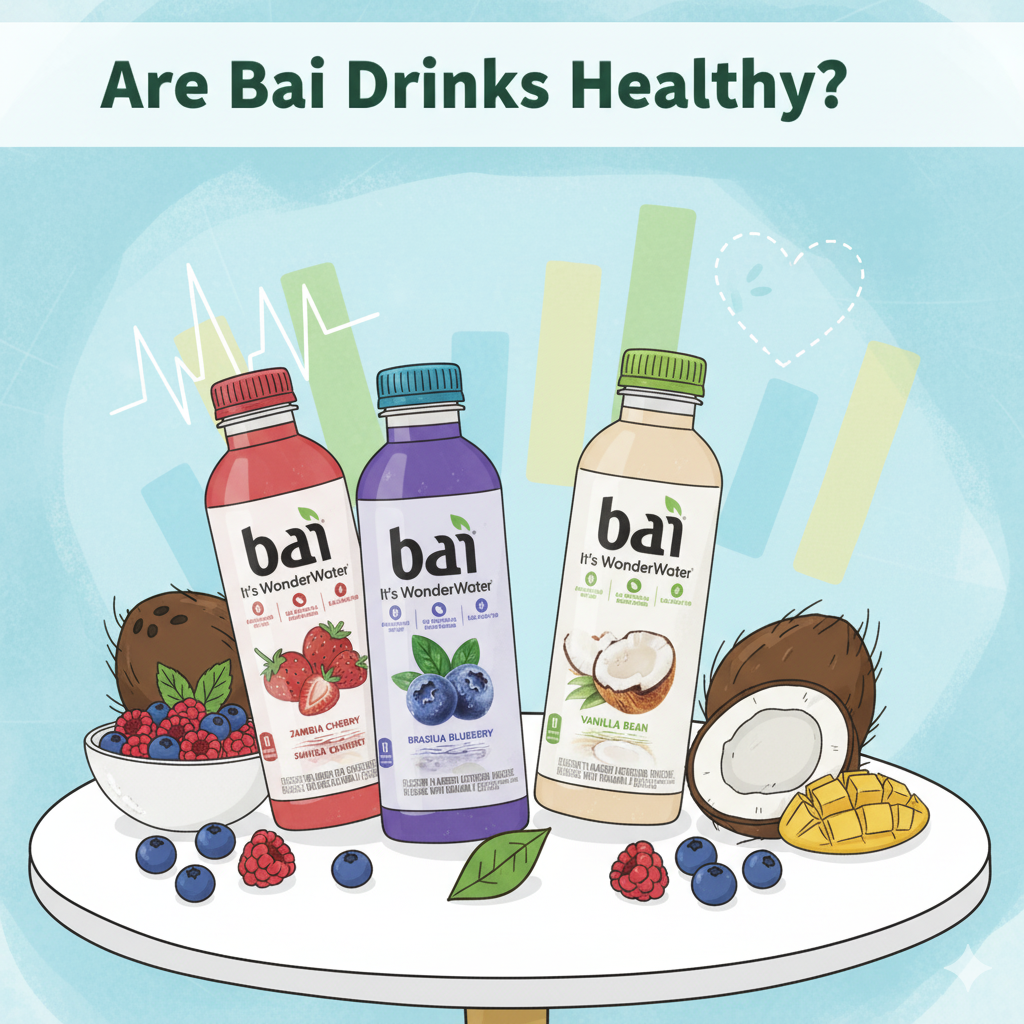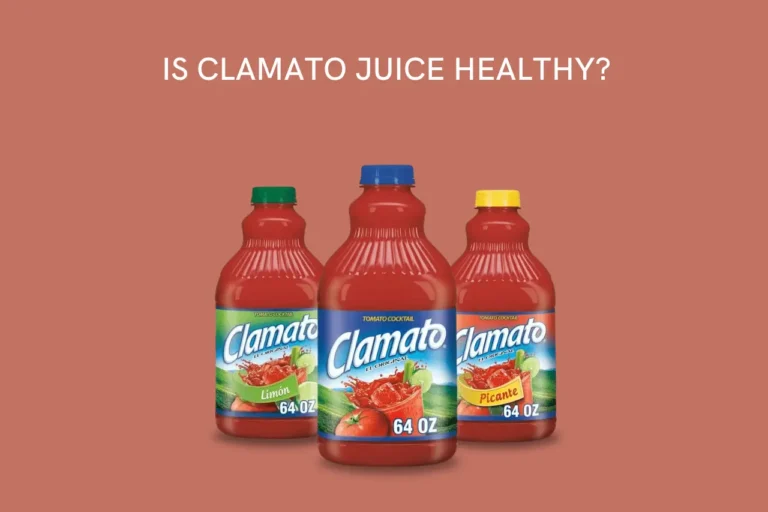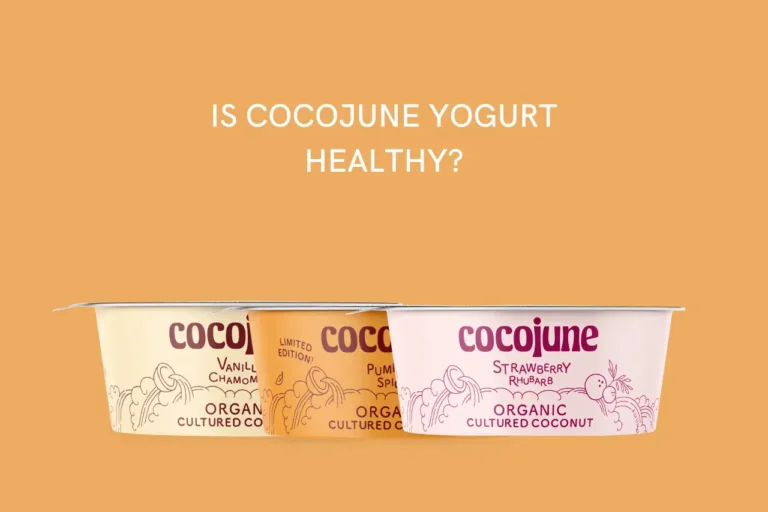You’re in the beverage aisle, trying to make a better choice. Soda is a no-go, but plain water feels… uninspiring. Then you see it: a sleek bottle of Bai. It boasts antioxidants, low calories, and exotic flavors like “Molokai Coconut” and “Brasilia Blueberry.” It feels healthy. It’s marketed as a smart, sophisticated choice.
But is it actually good for you?
The answer isn’t a simple yes or no. Bai exists in the murky middle ground of the beverage world—a far cry from the nutritional disaster of sugary sodas, but not quite the holy grail of health it sometimes appears to be.
In this deep dive, we’re going beyond the marketing. We’ll dissect the label, analyze every key ingredient, and give you the straight facts. By the end of this article, you’ll know exactly what you’re pouring into your body and whether Bai deserves a spot in your fridge.
The Short Answer: It Depends on Your Definition of “Healthy”
If you’re looking for a quick yes or no, here it is: Bai drinks are significantly healthier than most soft drinks, but they’re not quite as beneficial as plain water. They occupy that interesting middle ground—better than soda, not quite a health drink.
Now, let’s dive deeper into why.
What’s Actually Inside a Bai Drink?
Before we can determine if something is healthy, we need to know what’s in it. Let’s break down the ingredients and nutritional profile of Bai drinks.
The Nutritional Breakdown
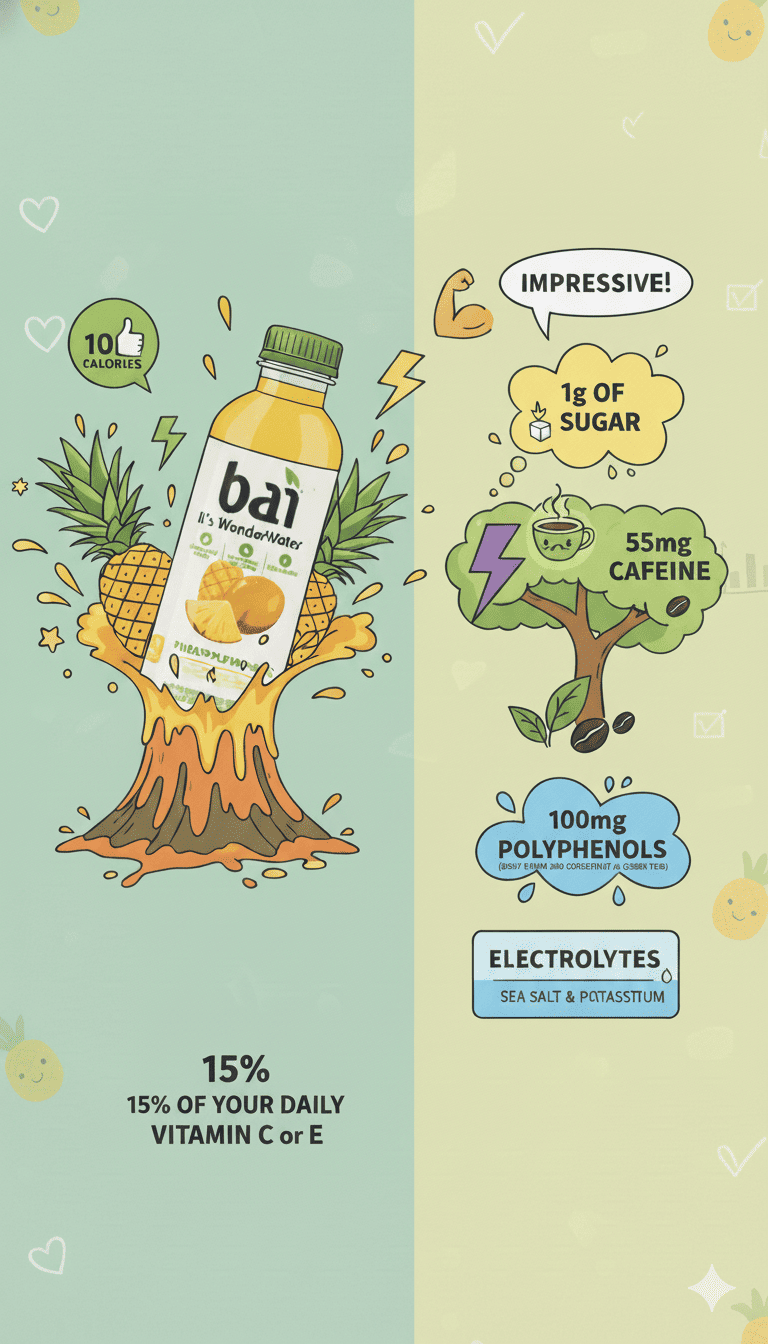
Every Bai bottle contains:
- 10 calories (impressive for a flavored drink)
- Just 1 gram of sugar (compared to 39g in a regular Coke)
- 55mg of caffeine (about the same as a cup of green tea)
- 100mg of polyphenols from tea and coffeefruit extracts
- Electrolytes from sea salt and potassium
- 15% of your daily Vitamin C or E (depending on the flavor)
- 15% of your daily Zinc
On the surface, this is fantastic. With only 10 calories and a single gram of sugar, Bai is a low-calorie, low-sugar beverage. This is its single biggest health advantage, especially when you compare it to a soda that can have 150+ calories and 40 gram of sugar.
The Ingredient Deep Dive (The Devil in the Details):
This is where things get interesting. Let’s look at the key players in the ingredient list.
- Sweeteners: Stevia and Monk Fruit
- What they are: Natural, zero-calorie sweeteners derived from plants.
- The Verdict: This is a major win. Bai uses these to achieve sweetness without the calories or blood sugar spike of sugar or high-fructose corn syrup. For those looking to reduce sugar intake, this is a significant benefit. However, some people are sensitive to the aftertaste of stevia.
- Antioxidants: “Polyphenols from Tea and Coffeefruit”
- What they are: Bai’s signature claim. Polyphenols are compounds found in plants that have antioxidant properties, meaning they can help fight oxidative stress in the body. The “coffeefruit” is the often-discarded fruit surrounding the coffee bean, which is a unique sourcing story.
- The Verdict: While 50-100mg of polyphenols is a positive addition, it’s not a magic bullet. You can get similar or greater amounts from a cup of green tea, a handful of berries, or a square of dark chocolate. Think of it as a nice bonus, not a primary reason to drink Bai.
- Electrolytes: Potassium and Sodium
- What they are: Minerals that help maintain fluid balance and nerve function. You’ll see them listed as potassium citrate and sea salt.
- The Verdict: The amounts are relatively low (e.g., 150-370mg of potassium, which is 4-8% of your Daily Value). This is not a sports drink designed for intense hydration after a hard workout, but it does provide a minor electrolyte boost compared to plain water.
- Vitamins and Minerals: Vitamin C, E, and Zinc
- What they are: Immune-supporting nutrients added to the drinks.
- The Verdict: Providing 15% of your Vitamin C and Zinc is a tangible benefit. If you’re using Bai to replace a sugary drink that offers no nutritional value, this is a clear upgrade. But again, it’s a supplement, not a replacement for a nutrient-rich diet.
- Other Ingredients: Citric Acid, Malic Acid, and “Natural Flavors”
- What they are: Citric and malic acid provide tartness and act as preservatives. “Natural flavors” is a broad term for flavor compounds derived from natural sources.
- The Verdict: These are generally recognized as safe. However, the acids can contribute to dental enamel erosion over time, especially if you sip throughout the day. This is a risk with any acidic beverage, including soda and fruit juice.
The Caffeine Content: A Hidden Consideration
Most Bai flavors contain 55mg of caffeine per bottle—comparable to a cup of green tea or about half a cup of coffee.
- The Pro: This is a nice, mild energy lift for some.
- The Con: If you’re sensitive to caffeine, trying to avoid it, or giving one to a child, this is a crucial detail to note. It’s not a caffeine-free hydrator.
Are Bai Drinks Better Than Regular Water?
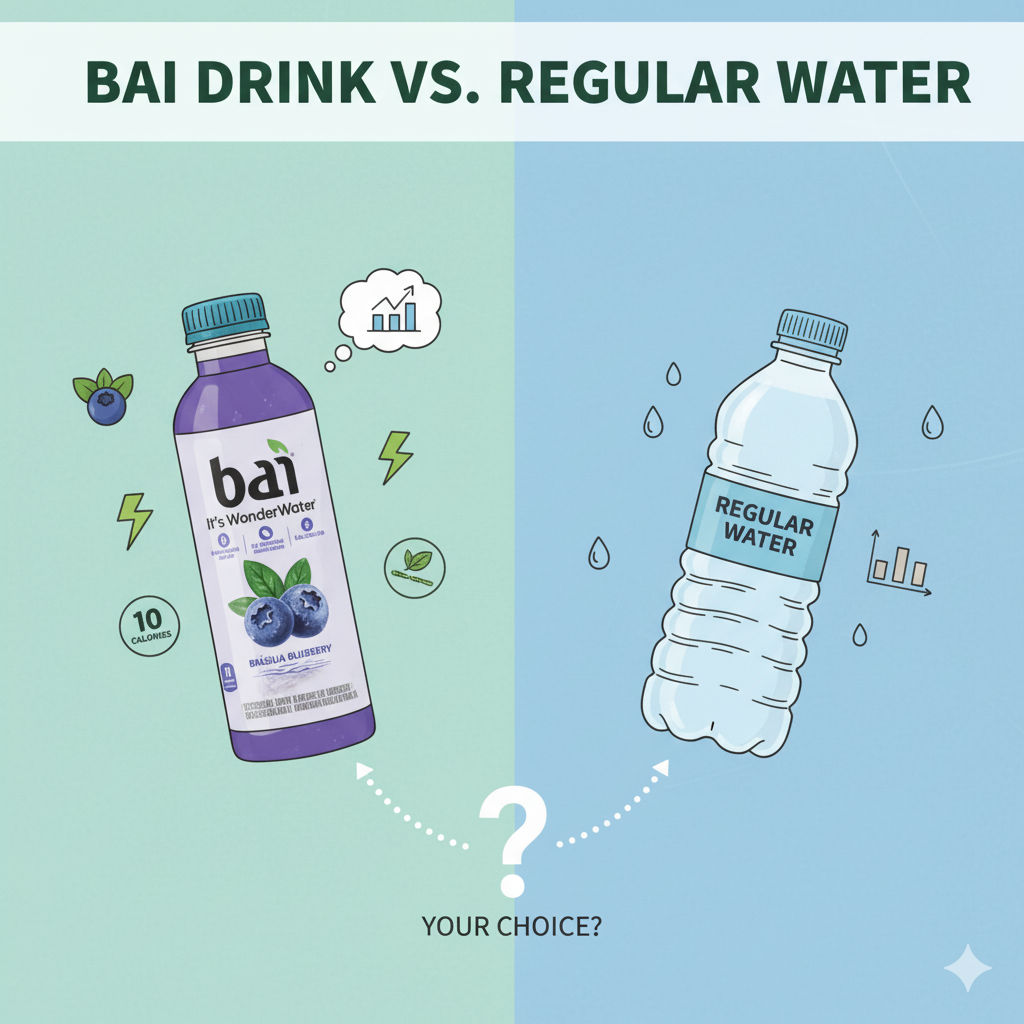
Let’s be honest: plain water is still the gold standard for hydration. It has zero calories, zero additives, and does exactly what your body needs—keeps you hydrated.
That said, Bai drinks do have some advantages over water in specific situations:
When Bai Wins:
- You need electrolyte replacement after a workout (though sports drinks might be better for intense exercise)
- You’re trying to kick a soda habit and need flavored alternatives
- You want a little caffeine boost without drinking coffee or energy drinks
- You struggle to drink enough fluids and need flavor to stay motivated
When Water Wins:
- Pretty much every other time
The antioxidants and vitamins in Bai are nice bonuses, but they don’t make these drinks “better” than water for hydration. Think of Bai as a healthier flavored beverage option, not as a water replacement. Your body still needs plain water throughout the day.
Bai vs. Soft Drinks: Is There Even a Competition?
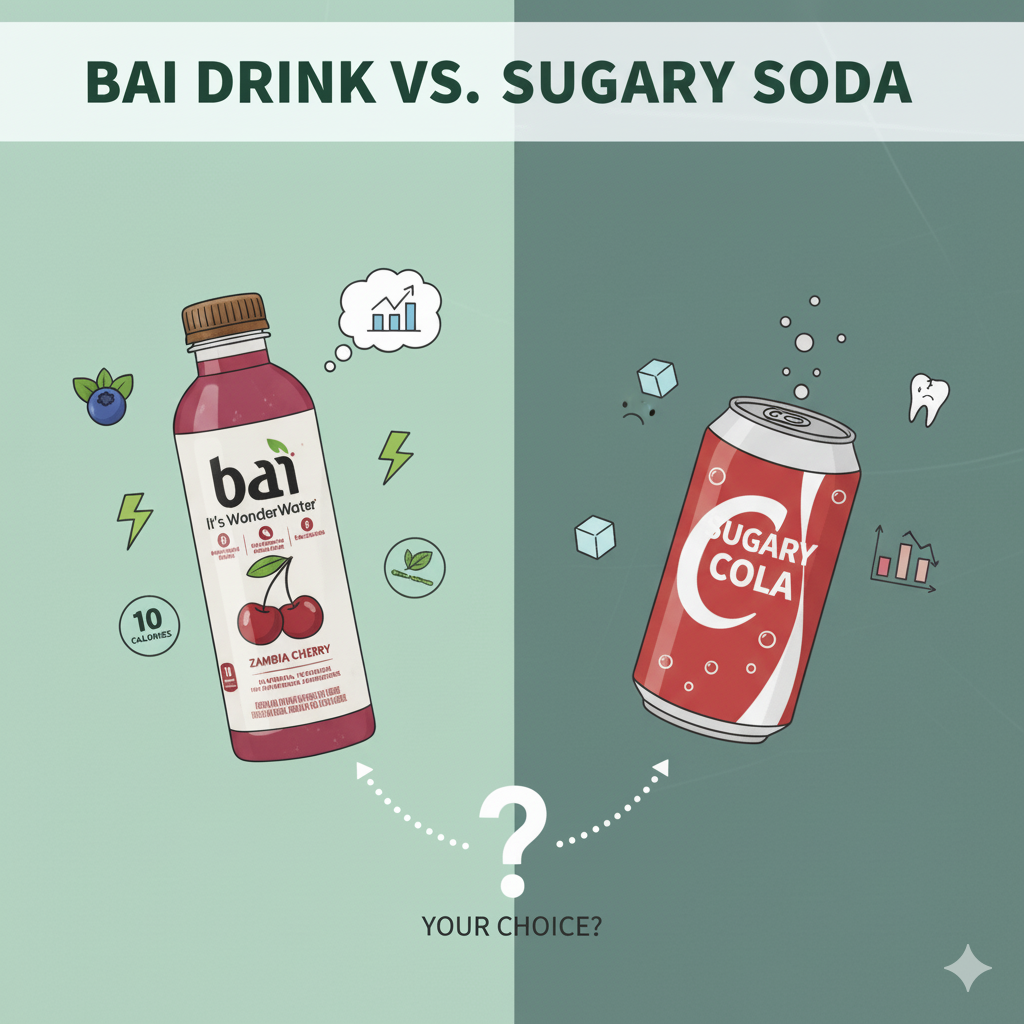
Now this is where Bai really shines. When compared to traditional soft drinks like Coca-Cola, Pepsi, or even “healthier” options like Gatorade, Bai comes out way ahead.
The Numbers Don’t Lie:
A 12-oz can of Coke contains:
- 140 calories
- 39 grams of sugar
- Zero nutrients
A 16-oz Bai drink contains:
- 10 calories
- 1 gram of sugar
- Antioxidants, vitamins, and zinc
If you’re someone who regularly drinks soda and you’re looking for a healthier alternative, switching to Bai is a genuinely smart move. You’ll slash your sugar intake dramatically while still enjoying a flavorful drink.
The caffeine in Bai also gives you that energy boost people often seek from soda, but without the sugar crash that follows. Plus, you’re actually getting some beneficial nutrients instead of empty calories.
The Sustainability Bonus
Here’s something that doesn’t directly relate to whether Bai drinks are healthy for you, but it matters for the planet’s health: Bai bottles are made from 100% recycled plastic (excluding the cap and label).
If you care about environmental impact, this is a point in Bai’s favor. Many beverage companies still use virgin plastic, so Bai’s commitment to recycled materials is worth noting.
Who Should (and Shouldn’t) Drink Bai?
Bai drinks are a good choice if you:
- Are trying to reduce sugar intake
- Want to quit or cut back on soda
- Need a low-calorie flavored beverage option
- Enjoy a mild caffeine boost
- Are looking for a drink with added nutrients
You might want to skip Bai if you:
- Are sensitive to caffeine (especially in the evening)
- Have digestive issues with sugar alcohols (for Malawi Mango flavor)
- Are pregnant and monitoring caffeine intake
- Prefer zero additives in your beverages
- Have a stevia sensitivity (some people find it has an unpleasant aftertaste)
The Flavor Factor: Does Healthy Taste Good?
Let’s address the elephant in the room—taste. A drink can be as healthy as you want, but if it tastes like cardboard, you’re not going to drink it.
Bai offers 13 different flavors, from Simbu Strawberry to Kula Watermelon. The exotic names are mostly marketing (the drinks don’t actually come from Zambia or Madagascar), but the variety means there’s probably a flavor you’ll enjoy.
Most people find Bai drinks refreshing and pleasant, though the stevia does give a slightly different sweetness compared to sugar. If you’ve never tried stevia-sweetened beverages before, your first sip might taste a bit off. Give it a chance—your taste buds usually adjust after a few tries.
The Bottom Line: So, Are Bai Drinks Healthy?
After analyzing the ingredients, nutritional content, and comparing them to alternatives, here’s my honest verdict:
Yes, Bai drinks can be part of a healthy diet—with some important caveats.
They’re not miracle health drinks, but they’re a solid choice if you’re looking for a low-calorie, low-sugar beverage that actually tastes good. The antioxidants from coffeefruit, the added vitamins and zinc, and the minimal calorie count make them a smart alternative to soda and many other flavored drinks.
However, they’re still processed beverages with added ingredients. Plain water should still be your primary source of hydration. Think of Bai as an occasional treat or a tool to help you avoid less healthy options.
My Recommendations:
Use Bai drinks strategically:
- As a soda replacement when you’re craving something sweet
- For a mid-afternoon energy boost without the coffee jitters
- Post-workout when you want electrolytes with flavor
- When you need help reaching your daily fluid intake goals
Don’t rely on them exclusively:
- You still need plain water
- Whole fruits provide more nutrients than any drink
- The caffeine content means you shouldn’t drink them all day long
- They shouldn’t replace actual meals or substantial nutrition
The Real Question: Are They Worth It?
Bai drinks typically cost more than soda and definitely more than tap water. Are they worth the price?
If you’re currently spending money on Starbucks Frappuccinos, energy drinks, or regular soda, then yes—Bai is a healthier and often cheaper alternative. You’re getting better nutrition for your dollar.
If you’re comparing them to filtered water from home, then no—water is free and just as hydrating.
It really comes down to what you’re replacing. If Bai helps you drink less soda or skip that sugary afternoon pick-me-up, then the investment in your health is absolutely worth it.
Final Thoughts
Are Bai drinks healthy? The answer is nuanced, just like most things in nutrition. They’re not a superfood, but they’re also far from junk food. They sit in that useful middle zone—a beverage that tastes good, provides some nutrients, and won’t derail your health goals.
The fact that they contain only 10 calories and 1 gram of sugar while delivering antioxidants, vitamins, and electrolytes makes them one of the better options in the flavored beverage aisle. Are they as healthy as water? No. Are they healthier than almost every other bottled drink you’ll find at the convenience store? Absolutely.
If you enjoy the taste and they help you make better choices throughout your day, then Bai drinks can definitely be part of a healthy lifestyle. Just remember—they’re a tool, not a solution. Real health comes from a balanced diet, regular exercise, adequate sleep, and yes, plenty of plain water.
So go ahead and enjoy that Brasilia Blueberry or Molokai Coconut. Just don’t expect it to magically transform your health. Think of it as a smart choice in a world full of not-so-smart beverage options.
And hey, if you’re still chugging regular soda, switching to Bai might be one of the easiest health upgrades you’ll ever make. Your body (and your dentist) will thank you.
